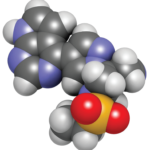In fact, working with baricitinib, Dr. Kremer found it necessary to more closely analyze the total cholesterol picture. “If the LDL changes are now [increases in] large LDL molecules, which are less atherogenic, and if the HDL changes are now [increases in] smaller HDL molecules, the evolution of these lipid changes seems to be in the direction that would not be atherogenic.”
“If you’re just measuring LDL, it and serum creatinine will increase,” Dr. Kremer said. These effects were also noted in the largest Phase III trial to date, an international randomized radiographic study led by Désirée van der Heijde, one-year results of which were presented at the ACR Annual Meeting in November 2011.3 Authors demonstrated that tofacitinib inhibited progression of structural damage and improved disease activity in patients with RA who are also receiving MTX.
Monitoring laboratory assays is important, but, as Dr. Kremer noted, “The question is, do we treat the patient or do we treat the lab results?” He advised his audience to “Keep in mind that the enzyme assays really don’t tell the whole story. You really need full blood assays and you need to look back, as my friend John O’Shea has said, and see what happens in human beings.”
The specificity of JAK inhibition remains a complex question, noted Dr. Kremer. Somatic mutations of the JAK2 gene, for example, stimulate the production of red blood cells, “so if you have a JAK2 inhibitor or a pan-JAK inhibitor, one of the things that you might expect, even as inflammation decreases and your patient gets better, are IL-6 inhibition types of effects.” There is also no doubt, said Dr. Kremer, that there are TNF-downstream effects of JAK inhibition. These effects were foreshadowed nearly 20 years ago in a seminal 1995 paper in Science, which identified the role of JAK3 in lymphoid development in a patient with severe combined immunodeficiency syndrome (SCID) who had lost function of JAK3. According to the Science authors, “The current study further suggests that any agents that inactivate JAK 3 function may be potent immunosuppressants.”4
Dr. Kremer has seen occasional development of infections and said that he recommends giving Zovirax vaccine prophylactically before starting tofacitinib; if the patient has recurrent herpes zoster infection, he might not use tofacitinib at all.
Mono- vs. Combination Therapy
Some preliminary data suggest a case for utilization of monotherapy; however, Dr. Kremer said, the decision about monotherapy with a JAK inhibitor will most likely need to be seen in a societal as well as economic context.

